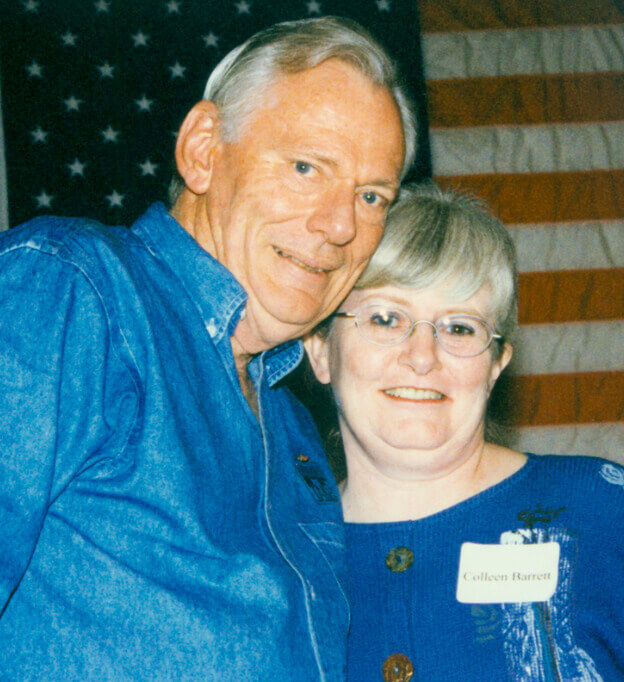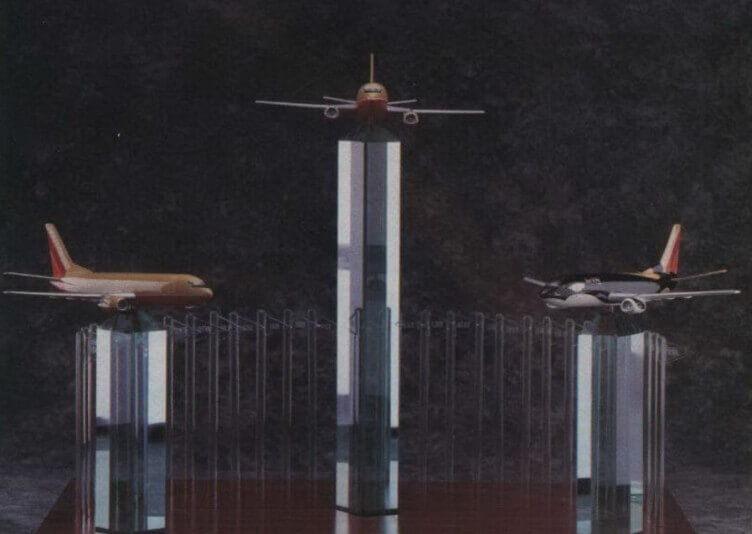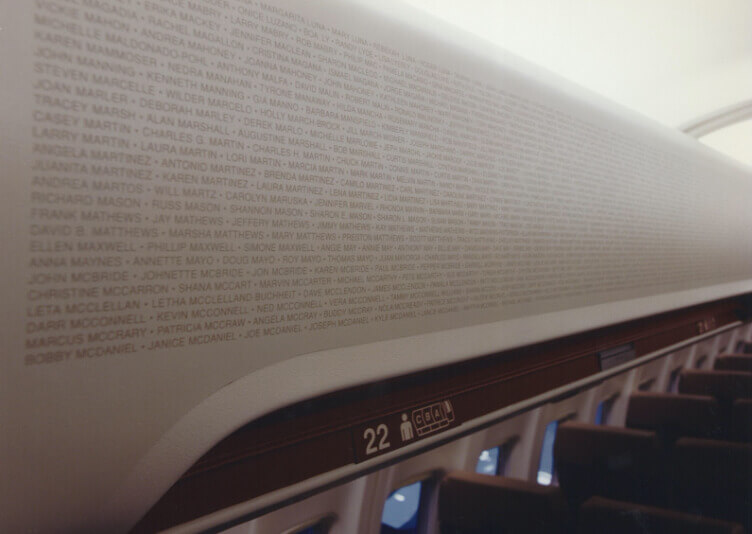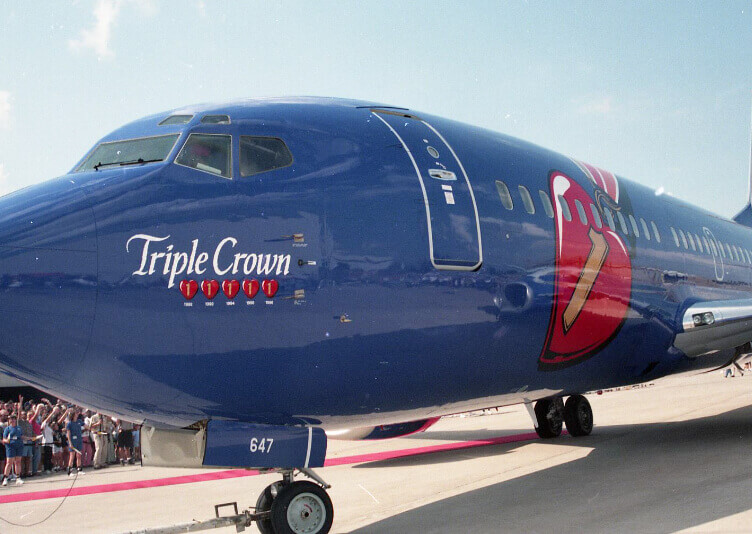
Herb and Colleen worked together since 1968, providing the perfect blend of Leadership for the growing airline.
Crowns All Around: Southwest Triple Crown
On July 7, 1988, Southwest Airlines received word it had achieved a unique distinction. According to the monthly Air Travel Consumer Report from the U.S. Department of Transportation (DOT), Southwest ranked first among domestic airlines in three key metrics: best on-time performance, fewest mishandled bags, and fewest Customer complaints. According to the DOT, this marked the first time a domestic carrier topped all three categories in one month, dating back to when these stats were first tracked in 1987.
Much of the credit was due to the Company’s unorthodox hiring policy, which prioritized attitude and character over graduate degrees and pedigrees. They hired strictly for attitude and trained for skill.
Give us People capable of showing genuine warmth, friendliness and love, Southwest Leadership still declares, and we’ll provide them all the skills they’ll need to succeed.
In many ways, Southwest’s Hospitality standards were borne from the yin-yang personalities of its earliest Leaders: freewheeling Chairman and CEO Herb Kelleher and the always on-task Colleen Barrett, its future President, who’d worked with Herb since 1968.
For Herb, time was a nuisance—an obstacle standing in the way of more laughs, handshakes, and hugs. At age 12, he’d lost his father, but fondly recalled his mother staying up into the wee hours of the night, whenever he needed her, to address his fears and questions. It’s one of the reasons Herb read every Customer letter he could in the 1980s and refused to turn away anyone seeking help, especially Employees.
The problem, as Colleen saw it, was that Herb was of two minds when it came to timeliness: Today would be nice, but tomorrow’s even better. While she championed the Company’s open-door policy—if Employees harbored worries or hatched ideas, she’d always listen—she focused with laser-like intensity on the importance of on-time work deliveries.
If you tell someone you’ll get them something on Wednesday and deliver it on Friday, Colleen once told Herb, they’re not going to recommend you to anyone else. But if you tell them Friday but deliver it on Wednesday, you’ll be their hero and they’ll go off and tell all their friends. Enter the famous Southwest adage of under-promise but over-deliver. It’s a step higher than merely meeting expectations. It’s about unexpectedly exceeding them.

Southwest Triple Crown trophy
Which may explain why, during various times from 1988 to 1991, Southwest continued to rank first among major airlines in DOT’s statistics for baggage handling, ontime performance, and fewest Customer complaints. In a clever marketing move, Southwest came up with the idea for the “Triple Crown” achievement to highlight its superior performance.
Over time, the “Triple Crown” moniker stuck and was quickly utilized by GSD&M, the Company’s agency of record. One ad in 1990, for example, celebrated Southwest’s fourth Triple Crown with the tagline: “No Other Airline Has Won One. This Is Our Quadruple Triple.”
In early 1992, Southwest decided to raise the bar and try to become the first airline to top all three major service categories at the end of year, rather than just for one month. In July, however, the Company was surprised to see an ad from rival Northwest Airlines, which claimed Northwest had won the Triple Crown in May. At the bottom of the ads in microscopic print was a disclaimer saying this was only in comparison to the seven largest domestic airlines. The fact that Southwest, then the eighth largest carrier, won the top ranking for one of the categories—fewest Customer complaints—was never mentioned.
Southwest responded with its iconic “Liar, Liar” ad. Much like its famous Dear Raquel Welch ad in 1971, it used nothing but text. It read: “After lengthy deliberation at the highest executive levels, and extensive consultation with our legal department, we have arrived at an official corporate response to Northwest Airlines’ claim to be number one in Customer Satisfaction: Liar, Liar. Pants on Fire.” What followed in fine print was a disclaimer of Southwest’s own, saying it had received the fewest Customer complaints per 100,000 passengers among the major airlines, and if Customers wanted real hospitality, they knew where to find it.

1997 on the overhead bins of Triple Crown One in honor of topping the DOT’s three key airline performance metrics five years in a row.
Northwest’s hubris inspired Southwest Employees to work harder to win its annual Triple Crown, which it did in December 1992—topping all three major performance categories for the year. When Southwest did the unthinkable and won the Triple Crown in 1993, 1994 and 1995—marking four stunning years in a row—Herb issued a new challenge.
“If you earn a fifth annual Triple Crown,” Herb said in what became known as the “Gimme Five” challenge, “I’ll paint the name of every person in this Company on a Boeing 737.”
Since every airline was aiming to dethrone the reigning champ, it was no easy challenge. But in the end, Southwest Employees took home their fifth annual Triple Crown in five years, an achievement so impressive that Herb and Colleen initiated the production of a themed plane, Triple Crown One, in their Employees’ honor.
The aptly named Triple Crown One, which sported a giant illustration of a heart-shaped Triple Crown medal against blue paint, officially debuted on June 9, 1997. Inside the plane, affixed to its overhead bins, were the names of every Southwest Airlines Employee in 1997—all 24,113 of them.
At the unveiling ceremony, Herb also announced the official retirement of the Triple Crown trophy. “When you’ve won it five times in a row,” Herb said, “you deserve to keep it forever.” He sweetened the moment with one more perk: making every day casual Friday for nonuniformed Employees. The gesture wasn’t permanent, but it made an indelible mark in the minds of the People who helped make the Triple Crown possible.

The Triple Crown One aircraft still flies today.
There were now other awards to aim for. The Southwest award collection today, both in its depth and breadth, is so expansive that no one trophy case could hold it.
Herb asked just one thing in return. Having delivered on his “Gimme Five” challenge, Herb skipped ahead to a “Gimme 60 Million” challenge. By 2001, Southwest’s 30th anniversary, Herb hoped to board 60 million Customers annually.
In typical Southwest fashion, its Employees did better than an ontime delivery of that pledge—they achieved their goal a year early in 2000—with plenty of love and ahead of schedule.
